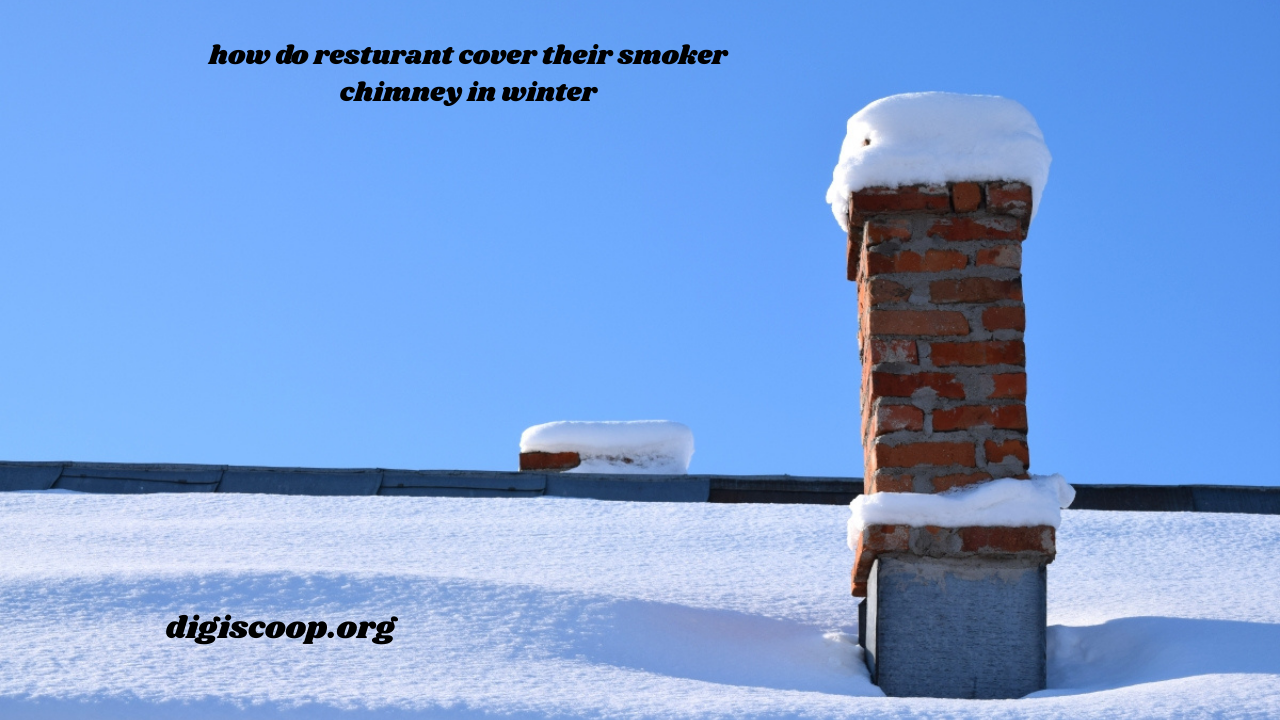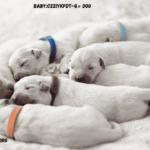Running a restaurant that uses a smoker can be challenging in the winter months. Cold air, snow, and freezing winds can make it harder to maintain consistent heat, which is key to smoking meat properly. That’s why many restaurant owners look for ways to protect or cover their smoker chimney during the colder season. Doing so isn’t just about convenience—it also affects safety, efficiency, and food quality. Let’s explore how restaurants handle this issue and what methods they use.
Why Restaurants Cover Their Smoker Chimney in Winter
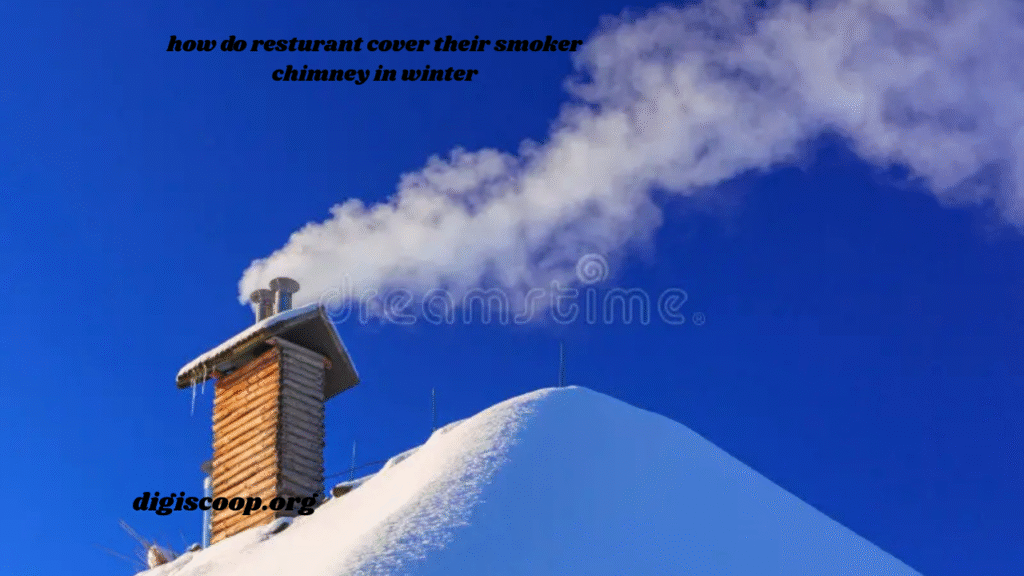
The main reason restaurants cover or shield their smoker chimney in winter is to maintain temperature control. A smoker’s performance relies on steady airflow and consistent heat. In freezing conditions, the chimney can draw in cold air that disrupts the balance. Wind gusts can even reverse the draft, pushing smoke back into the cooking chamber. Covering or insulating the chimney helps keep the smoker running smoothly.
Another important reason is preventing snow, ice, and rain from entering the chimney. Moisture inside the smoker can damage equipment, make it harder to start a fire, and affect the smoke quality. Restaurants that rely heavily on smoked food can’t afford interruptions, so keeping the chimney dry is a priority.
Using Chimney Caps and Covers
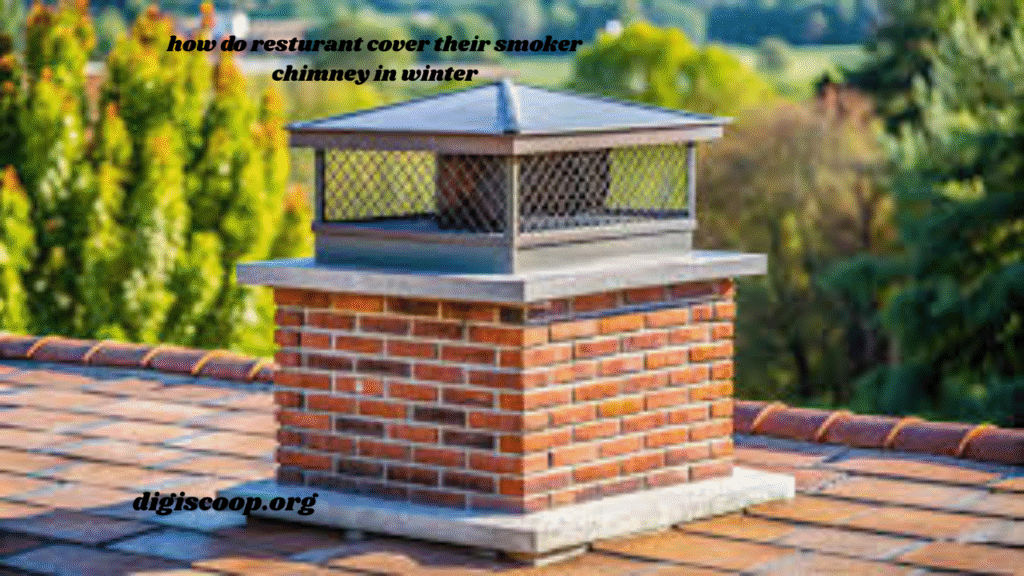
One common solution is installing a chimney cap. This is a protective cover that sits on top of the smoker chimney, usually made of stainless steel or heat-resistant metal. Chimney caps allow smoke to escape while blocking snow, ice, and rain. They also reduce the effect of wind gusts that might interfere with airflow.
Some restaurants go further and use adjustable chimney dampers. These act like a lid that can be partially closed to limit airflow when the weather is harsh. It helps trap heat inside the smoker, which reduces the amount of fuel needed to keep the fire steady.
Adding Insulation Around the Chimney
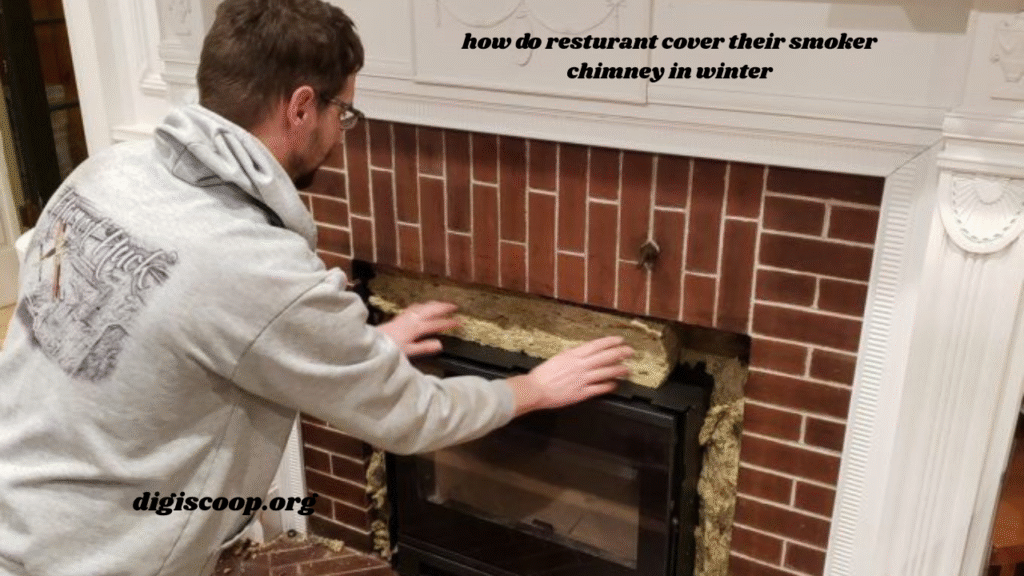
Another method is insulation. Restaurants may wrap parts of the smoker and chimney with high-temperature insulation blankets. These blankets are designed to handle extreme heat while keeping the cold out. By insulating the chimney, the smoke stays warmer as it exits, and the overall temperature inside the smoker remains more stable.
Some restaurants even build temporary enclosures or windbreaks around their smokers. For example, they might set up a small shed-like structure or use heavy-duty tarps to block icy winds. This doesn’t cover the chimney directly but shields it from harsh weather while still allowing smoke to vent safely.
Seasonal Maintenance and Cleaning
Winter brings more than just cold—it also brings moisture and soot buildup. Restaurants that cover their smoker chimneys usually pair that with extra maintenance. Regular cleaning prevents creosote (a sticky, flammable residue from smoke) from hardening in cold conditions. A clogged chimney in winter can be dangerous, leading to poor airflow or even fire hazards. Covering the chimney reduces the amount of snow and ice that enters, making cleaning easier and safer.
Safety Considerations
While covering a smoker chimney is helpful, it must be done carefully. If a chimney is covered too tightly, smoke won’t escape properly. This can cause dangerous carbon monoxide buildup or ruin the food with stale, trapped smoke. Restaurants typically use covers and caps that are designed for smokers, ensuring they allow ventilation while still providing protection.
Another safety step is checking for ice. Even with a cap, freezing rain or snow can build up around the chimney. Many restaurants assign staff to check the smoker regularly in winter to make sure airflow isn’t blocked.
Balancing Efficiency and Food Quality
Covering the chimney also helps restaurants reduce fuel costs. In cold weather, smokers burn more wood or charcoal to maintain heat. By protecting the chimney, less heat escapes, which means the smoker uses fuel more efficiently. At the same time, keeping a consistent temperature ensures that meats cook evenly and develop the right smoky flavor. Customers may never notice the behind-the-scenes adjustments, but the results show up on the plate.
Creative Restaurant Solutions
Some restaurants take a creative approach. A few build permanent outdoor smoker huts with ventilation systems designed for winter. Others use removable chimney extensions that are only installed during the cold season, directing smoke away from the worst of the wind. For smaller smokers, some restaurants simply store them in sheltered areas and run vent pipes through covered spaces. The key is always the same: protect the smoker while keeping the smoke flowing naturally.
Conclusion
So, how do restaurants cover their smoker chimney in winter?? The answer isn’t one single method but a combination of strategies. Many use chimney caps to keep out snow and ice, insulation to hold in heat, and windbreaks to block icy gusts. They also increase cleaning and safety checks to prevent blockages. For restaurants, keeping their smoker chimney covered and protected in winter isn’t just about convenience—it’s essential for safety, efficiency, and serving great-tasting food.
Also Read : kwal maco 2411 exterior: A Complete Guide to Performance, Uses, and Benefits
